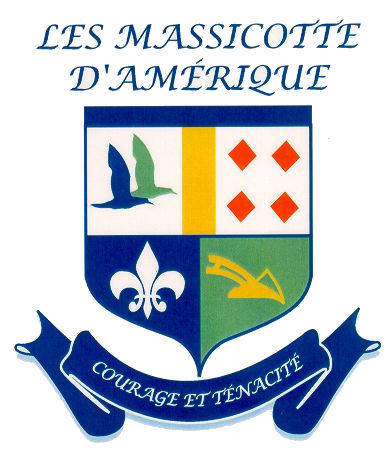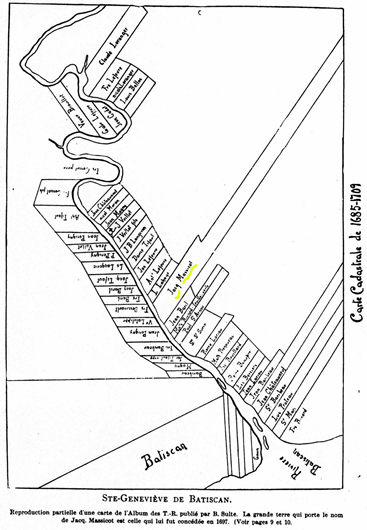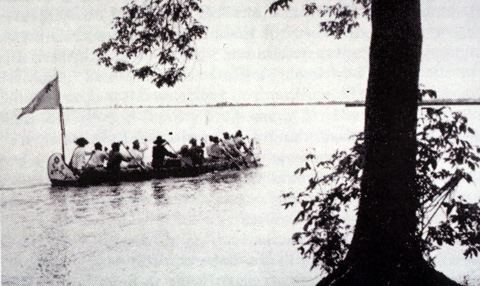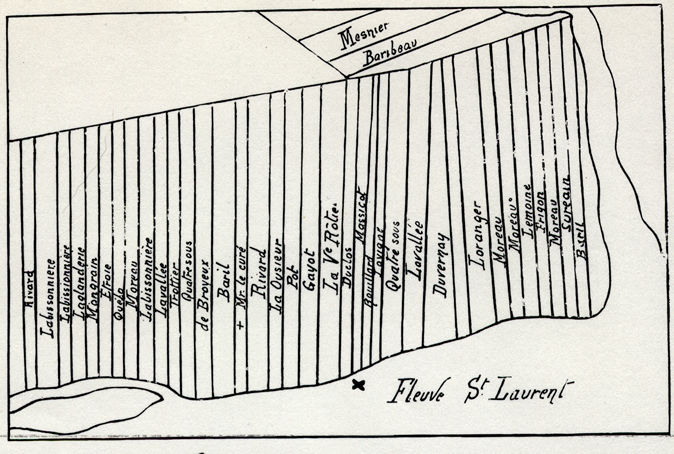
History of Long Lots
The early French government tried to transplant a vestigial form of feudalism, the seigneurial system, to its possessions in Canada. It granted large acreages of land to seigneurs, who were expected to bring in tenants to settle and work the land. In return, the seigneur had certain feudal rights over his tenants: to receive token rent payments from them, to require them to use his mill for grinding their grain, to demand various work services from them. The feudal elements of this system quickly became irrelevant in the New World, where land was available in abundance for tenants who felt oppressed and wanted to move, but the long-lot system of land division associated with seigneuries remains vividly imprinted on the landscape of North America that were settled by the French. Long lots can be found in many parts of Canada.

The picture above is from E.Z.'s book, which shows Jacques Massicot's land underlined in yellow. The French settlers were more interested in the fur trade than they were in farming, and the seigneuries were laid out to give maximum access to the rivers that were the main routes to the interior. Each seigneury (or, long lot) had a fairly narrow frontage on the river, but extended far back from it. Each was subdivided into long narrow strips that were only 350 to 600 feet wide but ten times as deep. At the back end of the strips a road ran parallel to the general course of the river, and this road provided the frontage for a second range of strips when the first range was fully occupied. The long-lot system of land survey (above) was cheap and easy, and it gave each farm equal amounts of each kind of soil on the floodplain, the terraces, and the interfluves. It gave access to a transportation artery (river or road) for a maximum number of farms. Each family could live on its own farm but still be close to neighbors. Each family developed its farm progressively, but clearing the forests near the farmstead first and leaving the more remote parts until later. Some farmers built isolated barns at the far ends of their farms to reduce the labor of hauling crops in to the farmstead and manure back out to the fields. The long-lot system of land survey has some disadvantages. Few rivers follow straight lines; the twists and turns of a meandering river complicated the survey, the "long lots" inside narrow bends were likely to be bobtailed, and considerable litigation was virtually inevitable if the river changed its course.

One of the most serious drawbacks of the long-lot survey system was related to inheritance. Farms were split right down the middle when the owner died, and farms that were already narrow became far too narrow when they were divided equally among the children, especially when families were as large as they often are in French Canada. Despite these drawbacks, the French carried the long-lot survey system with them wherever they settled in North America. They remained more interested in fur trading than in farming, and except in Louisiana the settlements that developed beside their trading posts were small and grew slowly.
Below is another drawing out of E.Z. Massicotte's book showing another lot owned by Jacques. This land he never used. He eventually sold it. His land is marked with the X. This land was located off the St. Laurent River where as the Farm land was located off the Batiscan River.

Last
Updated
May 19th, 2002